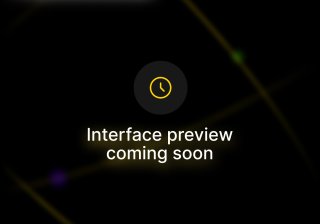Permission marketing is the privilege (not the right) of delivering anticipated, personal, and relevant messages to people who actually want to get them.” — Seth Godin
The phrase permission marketing was coined by Seth Godin in 2008 and applies to all kinds of marketing.
This concept makes more sense now than ever before, when people can skip ads, tune out notifications, mark your emails as spam, unsubscribe, or never even opt in if you bombard them without knowing whether they want to hear from you.
For email marketing, it means getting a recipient’s consent to send them emails about what you promised when they opted in to receive them.
The opposite of permission-based email marketing is when you purchase a list or scrape email addresses from social media or websites, then send those contacts content they never signed up for.
First of all, this isn’t legal to do, and secondly, these people are not aware of your brand and will likely mark you as spam, hurting your email delivery rate.
Table of Contents
Why Permission-Based Email Marketing Is Good for Your Business
Once you have someone’s attention, you only need to put your best content and product out there, and they will likely become your patrons or customers. This means a higher ROI.
The cost of engaging people in further conversations, converting them to customers, and then to high-end customers is lower compared to any other channel. This means lower investment, more profit, and more room for creativity.
Interested people don’t mark you as spam or unsubscribe in large numbers. This keeps your domain reputation high, and your emails are more likely to safely land in inboxes rather than spam folders.
How to Get Permission
A subscription form coupled with an opt-in confirmation email is the most common way to ensure you have permission to send emails to a particular address. This is called a double opt-in.
Step 1: Ask the person visiting your website, booth, or store to provide their email address. You can use a subscription form on your website or an Excel sheet at your event.
An example of subscription form at nesslanbs.com showing exactly what to expect in your inbox if you provide your email address.
Step 2: Send them an email to confirm that they want to receive emails from you.
It’s called opt-in confirmation email.
A double-opt-in process is preferred because it confirms that the email address is valid and monitored, not fake or bot-generated. It’s highly recommended if you value quality leads over rapid audience growth.
It’s true that some people complete step one but never check their inbox for the confirmation email.
In that case, you can use single opt-in, meaning people who enter their email address are automatically added to your broadcast list without confirmation.
This has disadvantages too.
You can end up with fake or mistyped emails, as some users enter random addresses just to access free PDFs or lead magnets. This leaves you with unengaged contacts that reduce deliverability.
You will be left wondering, ‘who is that guy?’
Now, since invalid emails in your list won’t have any engagement, they will lower your delivery rate and could push your average performance down to single-digit percentages.
Getting permission once doesn’t mean someone can’t take it back. As Seth Godin rightly said, it’s a privilege, not a right.
Two Important Links
There are two essential tools for people who want to opt out:
Unsubscribe link - Instead of sending emails to uninterested people who might mark your content as spam, include an unsubscribe option. It helps you avoid spam complaints and keeps your sender reputation intact.
Link to manage email preferences -: Allow subscribers to choose the frequency and type of emails they receive. This increases engagement and reduces spam complaints. If they ever experience FOMO, they may re-enable full frequency later.
These links need to be placed in the footer of every email you send out so they are clearly visible and accessible without bothering with email content.
Make it easy to find. Else, there is a high chance people will just mark your emails spam.
Permission-based email marketing is not a shortcut like purchasing or scraping emails, but it is a long-term strategy proven to work across all industries, newsletters, and campaigns.
Implementing is not even an effort or price intensive task as a good email marketing software (ESP) will be able to take care of - subscription form, sending an opt-in confirmation email, adding them to your broadcast list & even removing when unsubscribed.
All of this is done automatically.
If you are looking for an ESP that can help you implement permission-based, you should check out SendX. It’s an easy subscriber with just an email and no credit cards are required. They don’t want to see your shiny bucks until you are fully impressed. So checkout SendX for free for 14 days.
